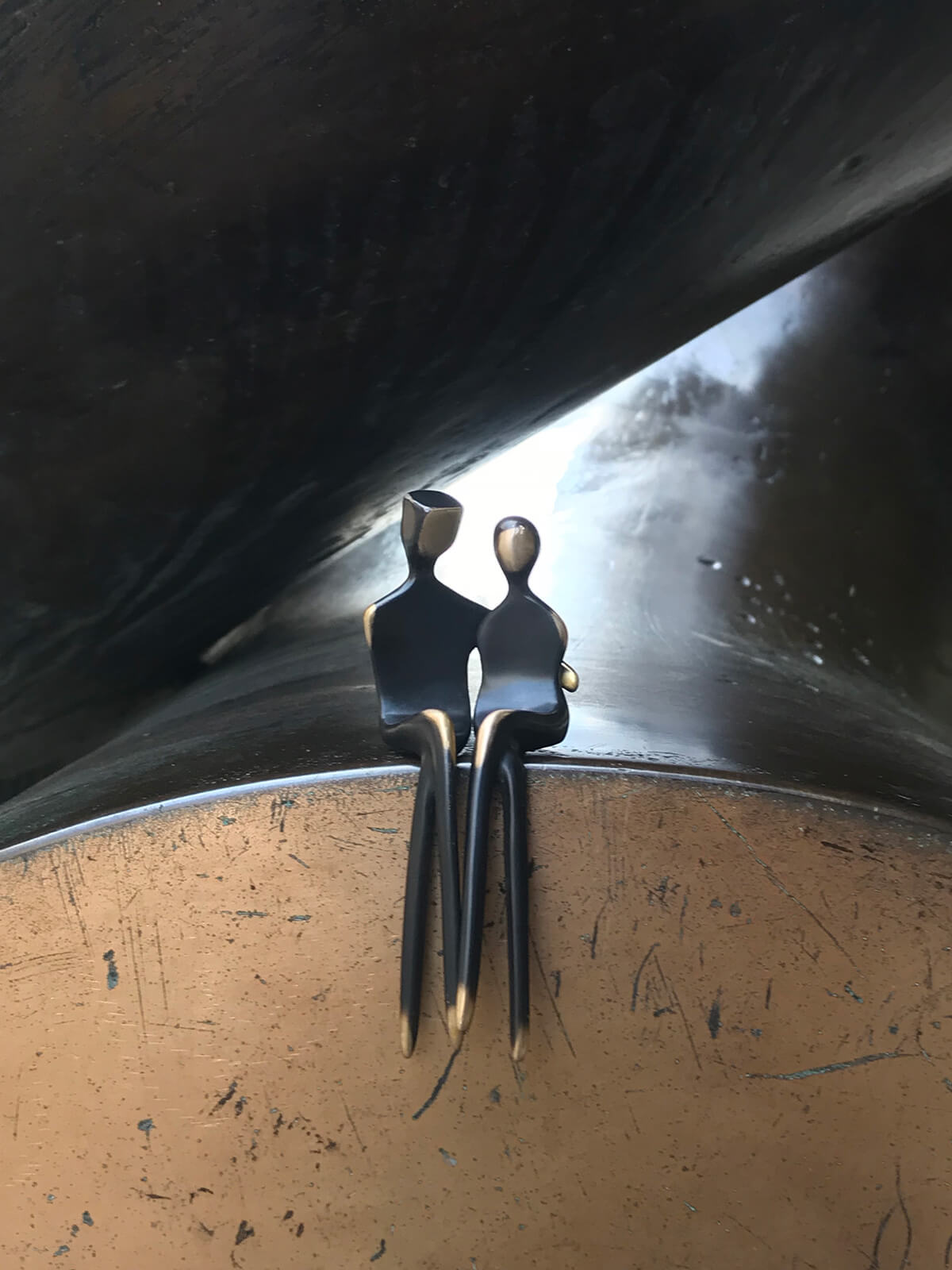The Lost Wax Bronze Casting Process
Creating an original fine art bronze sculpture, using the shell casting process, is complex and labor-intensive. It requires many steps and significant expertise in multiple disciplines. Several skilled crafts people are involved, starting with myself as the sculptor. I begin by modeling the original sculpture, either in clay or another sculpting material, from wax to metal.
Once I have an idea, I work with my chosen modeling material to make the master sculpture. It is almost like starting over when I need to enlarge the original maquette to create a larger piece.
Upon completion of the master model, I work with a mold maker. The mold maker starts by covering the master with multiple coats of thin silicone rubber, engulfing the form. Once the silicone sets, the figure is covered with plaster to form the mold that can be used to create multiple sculptures. The mold must be designed so that it can be reused and opened after each casting.


When the mold is complete, a wax copy of the original master needs to be developed. Liquid heated wax is poured into the prepared mold. Once it has hardened, the wax can easily be released from the mold. The unfinished wax copies are carefully reworked by me or a foundry wax worker with sculpting tools to take out any imperfections.
Once the waxes are to my satisfaction, I send them to the foundry. They attach the sprues (channels the bronze is poured through into the molds) and dip them into a ceramic mixture until a shell of about an inch has built up.
Next, they add the waxes in their shell to the kiln. The wax is molten out, and the negative is retained in the ceramic shell mold. Then the liquid bronze (2,250 degrees Fahrenheit!) is poured into this second mold. After a slow cooling time, the ceramic shell is destroyed and the raw bronze is sandblasted. The sprues are roughly cut with a plasma cutter by the metalworker. They also do some welding to fill in holes in the metal, referred to as “cutting and chasing”, and generally working and sanding details in the bronze.
The raw bronze is sandblasted again and carefully cleaned. To get the desired finished look, acids and chemicals are applied to create the coloration called “patina”.
Finally, certain surfaces like the faces and knees of the finished bronze sculpture are highlighted by polishing and a protective coating of wax is applied that prevents further oxidation.
Your fun begins, I asking for your participation. You can assemble your own bronze family portrait in several sizes.
Visit the studio and pick out your favorites. I will create a custom piece to your family.
Love, let it resonate with you.”
